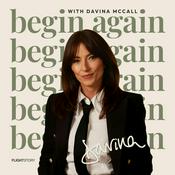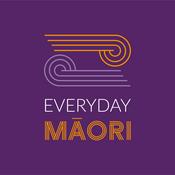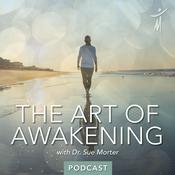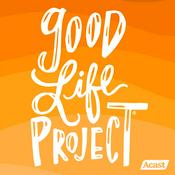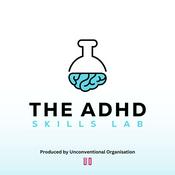Available Episodes
5 of 128
- How Purpose Fuels Progress: The Map You've Been Missing - PHH 238My first ocean cruise was a cruise from New York City to Bermuda. I'd never been on a big ocean liner before. Although I've done a couple other ocean cruises since then, I'm not really a fan. I love exploring, and there is only so much exploring you can do on a ship in the middle of the ocean. But on this first cruise, I did love the feeling of being in the middle of the vastness of the ocean with nothing but water all around. The feeling of not having any landmarks - literally - was a little exhilarating and more than a little awe-inspiring. Naturally, I wasn't really frightened; I assumed, logically and correctly, that the captain and crew knew where we were heading and how to get there. I myself wouldn't have had a clue, but I never doubted that I could rely on them to get me safely to Bermuda and back. Nautical navigation is a mystery to me, and I was impressed by the notion that all the power and energy of the ship would have been useless if the captain hadn't set a direction and followed that direction with purpose. And that ties in with what I want to talk about with you today - the power of purpose. Our energy, our passion for playing the harp, is useless without a purpose. As I see it, purpose has two important ingredients. One is directional. When we have a goal we want to accomplish, we need to have a clear idea of how to get from here to there. This gives our practice a purpose every day. But purpose also encompasses meaning, specifically what our harp journey means to us. Without that meaning, our goals will not be as personally compelling and our progress will not be as swift. This is about our passion for playing the harp, not passion in a dramatic way, but simply our deeply felt conviction that we love playing the harp. Today, I'd like to help you consider your passion and your purpose, and how you can align them to make progress faster and to make both the process and the results more easily achievable and more deeply fulfilling. Real progress in our playing comes from the alignment of our energies and passion - the ship in my example - with a direction and of course, the courage to pursue it. So if you're feeling ready to be a little courageous with me, let's get started. Links to things I think you might be interested in that were mentioned in the podcast episode: Discover your path to progress at the Getaway Retreat, February 27 - March 3, 2026 in Kissimmee, Florida. Do You Need a Reason to Practice? 3 Ways to Find One blog post from the archives. Podcast Episode #94: 7 Skills That Mark Your Growth Harpmastery.com Get involved in the show! Send your questions and suggestions for future podcast episodes to me at [email protected] Looking for a transcript for this episode? Did you know that if you subscribe to this podcast on Apple Podcasts you will have access to their transcripts of each episode? LINKS NOT WORKING FOR YOU? FInd all the show resources here: https://www.harpmastery.com/blog/Episode-238--------38:07
- Music Angels: Leah Kim and the Transformative Power of Music - PHH 237I don't do very many interviews on this podcast. I started the show as a way to help harpists with their learning and I wanted, and still want, to be able to use this podcast to teach, to encourage and to inspire harpists all over the world. But over the last year, I have realized that there are other voices I want to be sure that you hear. After all, learning comes in many forms and hearing a variety of voices and viewpoints enriches us and our harp playing in so many ways. So during 2026, one of my objectives is to bring you into conversations with harpists, musicians and others who inspire me. These are people I want you to meet, even if it's only in this podcast format, because I want to share the inspiration that they have brought me with you. So today, I want to introduce you to a new friend of mine, Leah Kim. Leah is a violinist and her story starts in South Korea. Her story is truly an awe-inspiring one, and as you will hear, she shared a lot of it in our conversation. Since coming to the United States, she has performed and taught extensively, and currently she is Fine Arts Department Chair and Director of Music at Villa Maria Academy High School, founder/director of Villa Maria Conservatory, a violinist in Fairmount String Quartet, La Croix Quartet, and founder/Director of Pennsylvania Youth Orchestra and Chamberstrings Summer Camp. But it is her latest project that caught my attention and that was why I wanted to talk with her today. This year, she founded Music Angels, a non-profit organization with a mission to inspire and educate music students and musicians about the healing power of music, particularly through music therapy. Music Angels aims to be a bridge of hope and healing for those troubled, lonely, or sick, harnessing the transformative power of music. What you will discover as Leah and I talk is how Music Angels is not just about performing for others; it is about the ways in which we as musicians are enriched by sharing our music. You can see why I felt this fit right in with our focus on harp happiness. So let's get right to my conversation with Leah Kim of Music Angels. Links to things I think you might be interested in that were mentioned in the podcast episode: Read more about Music Angels, Inc. Don't miss any of the 12 Days of Harp Happiness Harpmastery.com Get involved in the show! Send your questions and suggestions for future podcast episodes to me at [email protected] Looking for a transcript for this episode? Did you know that if you subscribe to this podcast on Apple Podcasts you will have access to their transcripts of each episode? LINKS NOT WORKING FOR YOU? FInd all the show resources here: https://www.harpmastery.com/blog/Episode-237--------41:43
- 7 Quick Fixes so You Can Play Your Stress-Free Best - PHH 236It's time for a confidence boost. You've been practicing your holiday music and feeling like you're making good progress, but it's not quite there and the performance date is coming up soon. Your music is mostly fine. It has up days when everything goes perfectly and down days when it feels like you've never played the piece before. Maybe it's not quite up to tempo. Or maybe there are just a few measures - or maybe more than a few - that are resisting all your attempts to learn them and play them smoothly. Whatever the issue is, it's starting to be a little concerning because time is getting short. We never want to feel unprepared or less ready than we would like for a performance, but sometimes it happens, despite all our planning and preparation. Believe me, I am the last person who would try to tell you that you should have started learning the piece sooner, or practiced more. I know all too well from my own experience that sometimes music just takes longer to come together than we expect. But since we can't change the performance date, we can't wait for the issues to resolve themselves. We have to figure out a way to make everything work. That's something every professional harpist knows. There's a time when more practice is not an option. You have to look at where the music is today and make some choices. It's not giving up and it's definitely not staying up late to cram practice. Trust me - that never works. What I want to share with you today are seven things I have done when I have needed to pull the proverbial rabbit out of the hat. These are things you can do which will save you stress and worry and allow you take a breath and relax. Even better, they will let you play beautifully, with confidence. You may have tried some of these, or maybe even all of them, yourself, but if you have a performance date coming up a little sooner than you feel ready for, consider this a reminder. It's also permission. You don't have to make this hard on yourself. That's not what music should be about, and it certainly isn't what harp happiness is about. So sit back, take a sip of tea and let's dive in. Links to things I think you might be interested in that were mentioned in the podcast episode: Retreat Early Bird Pricing Free PDF: 20 Ways to Crush the Rush Harpmastery.com Get involved in the show! Send your questions and suggestions for future podcast episodes to me at [email protected] Looking for a transcript for this episode? Did you know that if you subscribe to this podcast on Apple Podcasts you will have access to their transcripts of each episode? LINKS NOT WORKING FOR YOU? FInd all the show resources here: https://www.harpmastery.com/blog/Episode-236--------35:54
- Where Harp Beginners Go Wrong - and Maybe You Do Too - PHH 235I know what I'm going to talk about with you today could be controversial. It could sound totally off target to you. Nevertheless, I hope you will hear me out. I want to share with you why and how I think most harp beginners start wrong, even if they are working with a teacher. It isn't exactly that we teachers aren't teaching the right things or that we aren't dedicated to the success of the students who are trusting us. It's that the path we walk with them feels so slow. Every individual comes to the harp with a unique skill set and level of musical experience, with their own learning style and level of commitment. But each student comes to the harp with the same objective: to play music on the harp. That's why I started the harp, and it's almost certainly why you did too. So today I want to talk about the things that hold beginners back, that keep them from making the progress they want, from playing the music they want, in a timeframe that feels right to them. Most of these things are simply misunderstandings about how music study works and what really leads to growth. Whether you're a beginner or not, some of these ideas may open your eyes to a faster way of learning, to a shorter path to the music. Specifically, we'll review the steps that most beginners take and why those steps actually lead them away from progress. Some of these ideas may seem uncomfortable, even a little crazy, but I hope you approach our discussion today with an open mind and a willingness to investigate a different way of learning. I know I'm preaching to the choir here; you wouldn't be listening to this podcast if you weren't committed to playing the harp and to investigating anything that might help you do so a little better and a little faster. Links to things I think you might be interested in that were mentioned in the podcast episode: Register for the Pro Tactics for Beginners Seminar Don't miss the Early Bird pricing for the Getaway Retreat Harpmastery.com Get involved in the show! Send your questions and suggestions for future podcast episodes to me at [email protected] Looking for a transcript for this episode? Did you know that if you subscribe to this podcast on Apple Podcasts you will have access to their transcripts of each episode? LINKS NOT WORKING FOR YOU? FInd all the show resources here: https://www.harpmastery.com/blog/Episode-235--------31:44
- Three Keys to Relieving Stress - PHH 234I was moving the harp the other day and once again, it occurred to me just how much stuff we have to carry around with us. Granted, I move my harp all the time for rehearsals and concerts - it's a big Lyon Healy Salzedo model harp - so you would think I'd be used to it by now. I guess I am, mostly; I don't have to think about what goes in the car, and my harp bag is always ready to go. But when I start counting the number of trips I have to make between my car and the concert hall in the pouring rain, I start wishing for a Star Trek transporter. But recently, while I was moving the harp, my bench, my stand, and my bag, I had a flash of insight; we harpists carry a lot of baggage with us. Not a revelation, I know, but it led my mind to consider the other kind of baggage we harpists carry, the stress that accumulates in our practice and performance. That's a kind of baggage that piles up in a sneaky way until one day, we find it has overwhelmed us. The physical stress that is part of practicing, the mental stress that can come with intense focus and the emotional stress of wanting to do our best when we play can add up to a potentially toxic level. The worrisome part is we rarely acknowledge the stress as it is building little by little. There is simply a moment when we know we can't take any more, often as we are in the final stages of preparing for a performance. That's when we want to be at our most focused, but our mind and body are shutting down, trying to protect us from too much stress. I'm better at managing stress than I used to be, but stress used to be baggage that I always carried with me to some degree. It came and went in cycles, and I'm embarrassed to admit that it never occurred to me that this wasn't or shouldn't have been normal. I don't want to be all doom and gloom here. What I want to talk about today is how to recognize that sneaky cycle of stress and release yourself from it. We'll talk about the hidden symptoms of stress and how to recognize them and how to keep them from coming back. It's time to ditch the excess baggage and feel free to play. Links to things I think you might be interested in that were mentioned in the podcast episode: Are you a beginner? Register now for my free seminar, Pro Tactics for Beginners. Register for the Getaway Retreat now at Early Bird Pricing! Stretches for Harpists, by Mary Jane D'Arville Harpmastery.com Get involved in the show! Send your questions and suggestions for future podcast episodes to me at [email protected] Looking for a transcript for this episode? Did you know that if you subscribe to this podcast on Apple Podcasts you will have access to their transcripts of each episode? LINKS NOT WORKING FOR YOU? FInd all the show resources here: https://www.harpmastery.com/blog/Episode-234--------40:58
More Education podcasts
Trending Education podcasts
About Practicing Harp Happiness
Is playing the harp harder than you thought it would be? Ever wish you knew the secrets to learning music that only the experts and the eight year old YouTube stars seem to know? Want to finally finish the pieces you start and play them with ease, confidence and joy? Harp Mastery founder and Harp Happiness expert Anne Sullivan believes every harp player can learn to play the music they want the way they want. Tune in as she clears the confusion around topics like fingering, technique, sight reading and practice skills and shares the insider tips that help her students make music beautifully. Whether you're playing the harp for fun or you're ready to take your playing to the next level, each Practicing Harp Happiness episode will reveal the strategies and insight you need to fire your imagination, enjoy your practice and love your harp playing.
Podcast websiteListen to Practicing Harp Happiness, Begin Again with Davina McCall and many other podcasts from around the world with the radio.net app
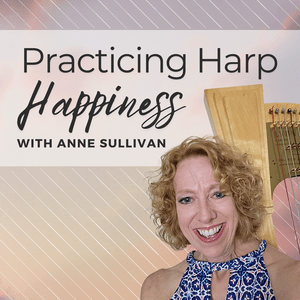
Get the free radio.net app
- Stations and podcasts to bookmark
- Stream via Wi-Fi or Bluetooth
- Supports Carplay & Android Auto
- Many other app features
Get the free radio.net app
- Stations and podcasts to bookmark
- Stream via Wi-Fi or Bluetooth
- Supports Carplay & Android Auto
- Many other app features


Practicing Harp Happiness
Scan code,
download the app,
start listening.
download the app,
start listening.
